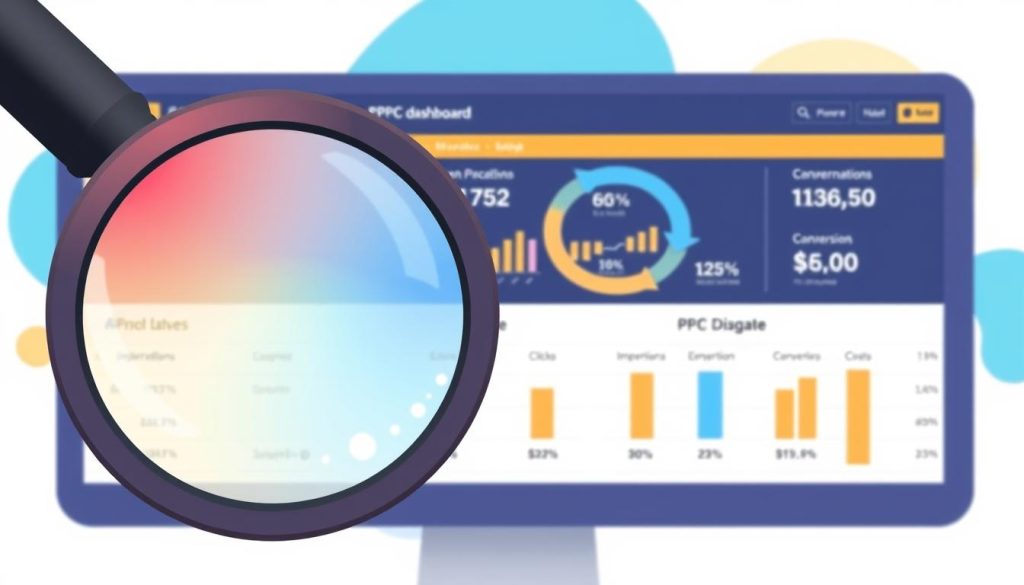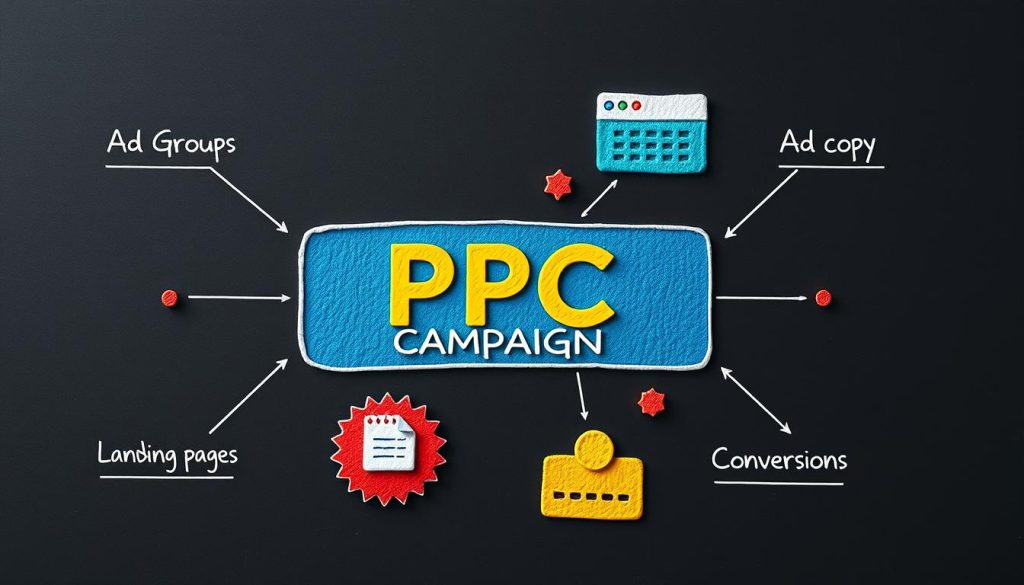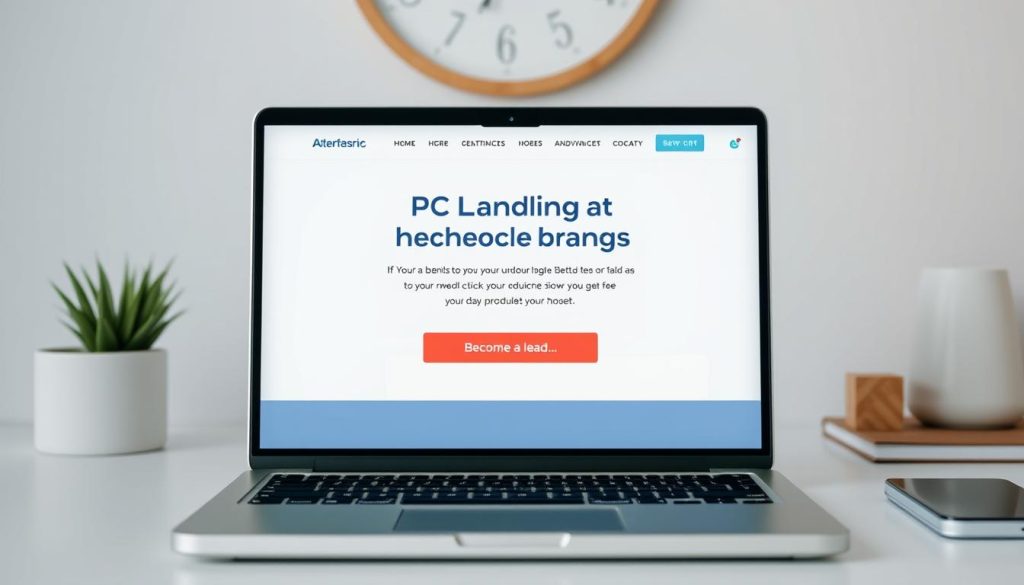In today’s digital landscape, pay-per-click (PPC) advertising has become a powerful tool for businesses looking to capture high-quality leads and drive targeted traffic to their online presence. By leveraging the power of PPC, companies can strategically showcase their offerings, connect with their ideal customers, and ultimately, generate valuable leads that can translate into conversions and revenue growth.
Key Takeaways
- PPC advertising is a highly effective way to capture leads online and reach your target audience.
- Properly setting up your PPC campaign, targeting the right audience, and creating compelling ad copy are crucial for successful lead generation.
- Optimizing your landing pages and continuously measuring and analyzing your campaign performance are essential to maximizing the impact of your PPC efforts.
- Implementing strategic remarketing and retargeting tactics can help you nurture and convert leads more effectively.
- Integrating PPC into your overall digital marketing strategy can significantly boost your lead capture and conversion rates.
Understanding PPC Advertising for Lead Generation
In the dynamic world of digital marketing, pay-per-click (PPC) advertising has emerged as a powerful tool for capturing valuable leads online. But what exactly is PPC, and how can it benefit your lead generation efforts? Let’s delve into the fundamentals and explore the advantages of incorporating PPC into your overall marketing strategy.
What is PPC Advertising?
PPC advertising is a form of digital advertising where businesses pay a fee each time one of their ads is clicked. This model allows advertisers to drive targeted traffic to their website or landing pages, with the ultimate goal of converting those visitors into leads or customers. PPC campaigns can be executed across various platforms, including search engines, social media, and display networks, providing a diverse range of opportunities to reach your audience.
The Benefits of PPC for Lead Capture
PPC offers several compelling advantages for businesses looking to generate high-quality leads online:
- Real-Time Data and Optimization: PPC campaigns provide immediate insights into the performance of your ads, allowing you to quickly identify and adjust strategies based on data-driven insights.
- Targeted Reach: PPC enables you to hyper-target your audience based on factors like search keywords, demographics, interests, and behavior, ensuring your ads are shown to the right people at the right time.
- Measurable Results: With PPC, you can track and analyze key metrics, such as click-through rates, conversion rates, and cost-per-lead, allowing you to continuously optimize your campaigns for maximum efficiency and return on investment.
- Scalability and Flexibility: PPC campaigns can be easily scaled up or down based on your evolving business needs and budget, providing a flexible and adaptable approach to lead generation.
By leveraging the power of PPC advertising, businesses can effectively capture high-intent leads, drive qualified traffic to their website, and ultimately, convert more prospects into valuable customers. As you explore the world of PPC, keep these fundamental principles in mind to unlock the full potential of this dynamic marketing channel.

Setting Up Your PPC Campaign
Launching a successful PPC (Pay-per-Click) campaign for lead generation requires meticulous planning and execution. The key steps in setting up your PPC campaign include selecting the right PPC platform, creating your account, and structuring your campaign for optimal performance.
Choosing the Right PPC Platform
The first step in setting up your PPC campaign is to choose the most suitable PPC platform. The most popular options include Google Ads, Microsoft Ads, and Facebook Ads. Each platform offers unique features, targeting capabilities, and audience reach. Carefully evaluate your business goals, target market, and budget to determine the best PPC platform for your lead generation needs.
Creating Your PPC Account
Once you’ve selected your PPC platform, the next step is to create your account. This involves providing your business information, setting up payment methods, and configuring your account settings. Ensure that your account details are accurate and up-to-date to avoid any issues during the campaign setup or optimization process.
Structuring Your PPC Campaign
Organizing your PPC campaign structure is crucial for achieving your lead generation objectives. Divide your campaign into relevant ad groups, each targeting specific keywords or audience segments. Tailor your ad copy, landing pages, and bidding strategies for each ad group to ensure maximum relevance and effectiveness.
| PPC Platform | Unique Features | Targeting Capabilities | Audience Reach |
|---|---|---|---|
| Google Ads | Extensive search network, advanced targeting options, AI-powered optimization | Keyword, demographic, location, and behavioral targeting | Broad reach across the Google network, including Search, Display, and YouTube |
| Microsoft Ads | Integrated with Bing and Microsoft products, competitive pricing, access to professional tools | Keyword, demographic, location, and device targeting | Significant user base on the Bing search engine and Microsoft network |
| Facebook Ads | Powerful targeting capabilities, visual ad formats, advanced audience segmentation | Demographic, interest, behavior, and location targeting | Vast user base on the Facebook, Instagram, and Messenger platforms |
By carefully navigating the PPC campaign setup process, you can lay the foundation for a lead-generating digital marketing strategy that drives valuable conversions and helps your business grow.

Targeting the Right Audience
Effective PPC advertising hinges on reaching the right audience. To capture quality leads, you must first identify your ideal customer – their pain points, preferences, and behaviors. This process, known as buyer persona development, is crucial for PPC audience targeting and ensuring your ads resonate with the people most likely to convert.
Identifying Your Ideal Customer
Begin by gathering data on your existing customers. What are their demographic details, such as age, location, and income level? What are their interests, challenges, and purchasing motivations? Compiling this information will help you create detailed buyer personas that accurately reflect your target audience.
Keyword Research and Selection
Keyword research for PPC is the next crucial step. Uncover the search terms your potential customers are using to find products or services like yours. This will inform your keyword selection and ensure your ads appear when your audience is actively searching and ready to engage.
Leverage tools like Google Ads Keyword Planner, SEMrush, or Ahrefs to conduct thorough keyword research. Analyze search volume, competition, and relevance to build a targeted list of keywords that align with your buyer personas and PPC campaign goals.
| Keyword | Search Volume | Competition | Relevance |
|---|---|---|---|
| PPC advertising | 50,000 | High | High |
| lead generation PPC | 12,000 | Medium | High |
| PPC audience targeting | 8,000 | Medium | High |
| buyer persona development | 6,000 | Low | High |

Creating Compelling Ad Copy
Crafting effective PPC ad copy is a crucial skill in lead capture. Your ad copy is often the first interaction potential customers have with your business, so it needs to be attention-grabbing and persuasive. By mastering the art of PPC ad copywriting, you can create messaging that resonates with your target audience and compels them to take action.
Crafting Attention-Grabbing Headlines
The headline is the most important element of your PPC ad. It’s the first thing people see, and it’s what determines whether they’ll read the rest of your ad. Crafting an attention-grabbing headline is essential for ad headline optimization and capturing the attention of your potential leads.
- Make it clear and concise, conveying the key benefit or offer in a few words.
- Use power words and emotional language to create a sense of urgency or excitement.
- Personalize the headline to speak directly to your target audience.
- Test different headline variations to see what resonates best with your audience.
Remember, the goal of your headline is to stop the scroll and compel your audience to read more. By focusing on ad messaging for lead capture, you can create headlines that are irresistible to your potential leads.
Once you’ve crafted a compelling headline, it’s time to focus on the rest of your ad copy best practices. Your ad copy should clearly communicate the value proposition, address the audience’s pain points, and provide a clear call-to-action. By aligning your messaging with the needs and desires of your target audience, you can create PPC ads that drive high-quality leads and conversions.
Landing Page Optimization
Once you’ve attracted potential leads with your PPC ads, it’s essential to have a well-designed PPC landing page that encourages conversions. Optimizing your lead capture landing page can significantly impact your overall conversion rate optimization for PPC efforts.
Elements of a High-Converting Landing Page
To create a high-performing PPC landing page, consider the following key elements:
- Compelling Headline: Craft a attention-grabbing headline that clearly communicates the value proposition and motivates the visitor to take action.
- Concise and Persuasive Copy: Provide a succinct and compelling description of your offer, highlighting the benefits and addressing any objections.
- Prominent Call-to-Action (CTA): Ensure that your CTA is visually striking and strategically placed to encourage visitors to convert.
- Relevant and Engaging Visuals: Use high-quality images, videos, or illustrations that support your messaging and create a visually appealing experience.
- Minimized Distractions: Streamline the page design and eliminate unnecessary elements to keep the focus on the conversion goal.
- Responsive and Mobile-Friendly: Optimize the landing page for seamless user experience across all devices and screen sizes.
- Social Proof and Testimonials: Incorporate social proof, such as customer reviews or case studies, to build trust and credibility.
By incorporating these key elements into your PPC landing page design, you can effectively capture leads and optimize your conversion rate for your PPC campaigns.

“The success of your PPC campaign ultimately comes down to the effectiveness of your landing page. Focus on creating an engaging, conversion-focused experience for your visitors.”
Capturing Leads Online with PPC Ads
Harnessing the power of PPC advertising can be a game-changer when it comes to generating high-quality leads for your business. By leveraging targeted PPC lead generation tactics, you can effectively capture the attention of your ideal customers and turn clicks into valuable online lead capture strategies. In this section, we’ll explore the strategies and best practices for PPC lead nurturing to ensure your PPC campaigns deliver a steady stream of qualified leads.
- Optimize Your Landing Pages: Ensure your PPC landing pages are designed to captivate and convert. Incorporate eye-catching visuals, concise and compelling copy, and clear calls-to-action to guide visitors seamlessly through the lead capture process.
- Personalize Your Messaging: Tailor your PPC ad copy and landing page content to the specific needs and pain points of your target audience. This personalized approach helps to build trust and increases the likelihood of conversion.
- Leverage Lead Magnets: Offering valuable content, such as ebooks, whitepapers, or free consultations, in exchange for contact information can be a powerful way to nurture and convert PPC leads.
- Implement Lead Scoring: Utilize lead scoring systems to identify and prioritize the most promising leads, allowing you to focus your PPC lead nurturing efforts on the individuals most likely to become customers.
- Automate Lead Nurturing: Automate your PPC lead nurturing process with email campaigns, retargeting ads, and personalized follow-ups to keep your leads engaged and moving through the sales funnel.
By incorporating these strategies into your PPC campaigns, you can unlock the full potential of online lead capture and turn your PPC efforts into a consistent source of high-quality leads for your business.
“PPC advertising is a powerful tool for capturing leads, but it’s crucial to pair it with a well-designed lead nurturing strategy to maximize your returns.”
Measuring and Analyzing Campaign Performance
Tracking the performance of your PPC campaigns is essential for driving continuous improvements and maximizing your lead generation efforts. By closely monitoring key metrics, you can gain valuable insights to optimize your campaigns and achieve better results.
Key Metrics to Track
To effectively analyze the success of your PPC campaign analytics, focus on the following key metrics:
- Click-through rate (CTR): Measures the percentage of users who click on your ad after seeing it.
- Conversion rate: Tracks the percentage of users who complete a desired action, such as submitting a lead form.
- Cost per lead (CPL): Calculates the average cost for each lead generated through your PPC performance tracking.
- Return on investment (ROI): Measures the overall profitability of your PPC data analysis efforts.
By closely monitoring these metrics, you can gain valuable insights into the performance of your campaigns and identify areas for PPC optimization. This data-driven approach will help you refine your targeting, ad copy, and landing page strategies to drive more qualified leads and maximize your return on investment.
| Metric | Definition | Importance |
|---|---|---|
| Click-through rate (CTR) | The percentage of users who click on your ad after seeing it. | Indicates the relevance and appeal of your ads to your target audience. |
| Conversion rate | The percentage of users who complete a desired action, such as submitting a lead form. | Measures the effectiveness of your landing pages and overall campaign strategy. |
| Cost per lead (CPL) | The average cost for each lead generated through your PPC efforts. | Helps you understand the profitability and efficiency of your lead generation campaigns. |
| Return on investment (ROI) | The overall profitability of your PPC data analysis efforts. | Evaluates the overall success and viability of your PPC campaigns. |
By closely monitoring these key metrics, you can gain valuable insights to optimize your PPC campaign analytics and drive more qualified leads through your online marketing efforts.
Remarketing and Retargeting Strategies
PPC remarketing and retargeting are strategic tactics that allow you to re-engage with potential customers who have already interacted with your online presence. By tracking user behavior and targeting those who have previously visited your website or interacted with your brand, you can nurture these leads and drive them further down the sales funnel.
Implementing a robust PPC remarketing campaign can be a game-changer for your lead generation efforts. By serving personalized ads to users who have already expressed interest in your products or services, you can keep your brand top-of-mind and encourage them to take the next step in the buying process. Effective retargeting strategies leverage data-driven insights to deliver tailored messaging and offers, ultimately boosting conversion rates.
Beyond traditional remarketing, advanced PPC tactics like dynamic retargeting can take your lead nurturing efforts to new heights. By dynamically displaying products or services that users have previously viewed, you can create a highly personalized and relevant ad experience, further increasing the chances of a conversion. Mastering these PPC remarketing and retargeting strategies can unlock a powerful avenue for capturing and converting qualified leads.




